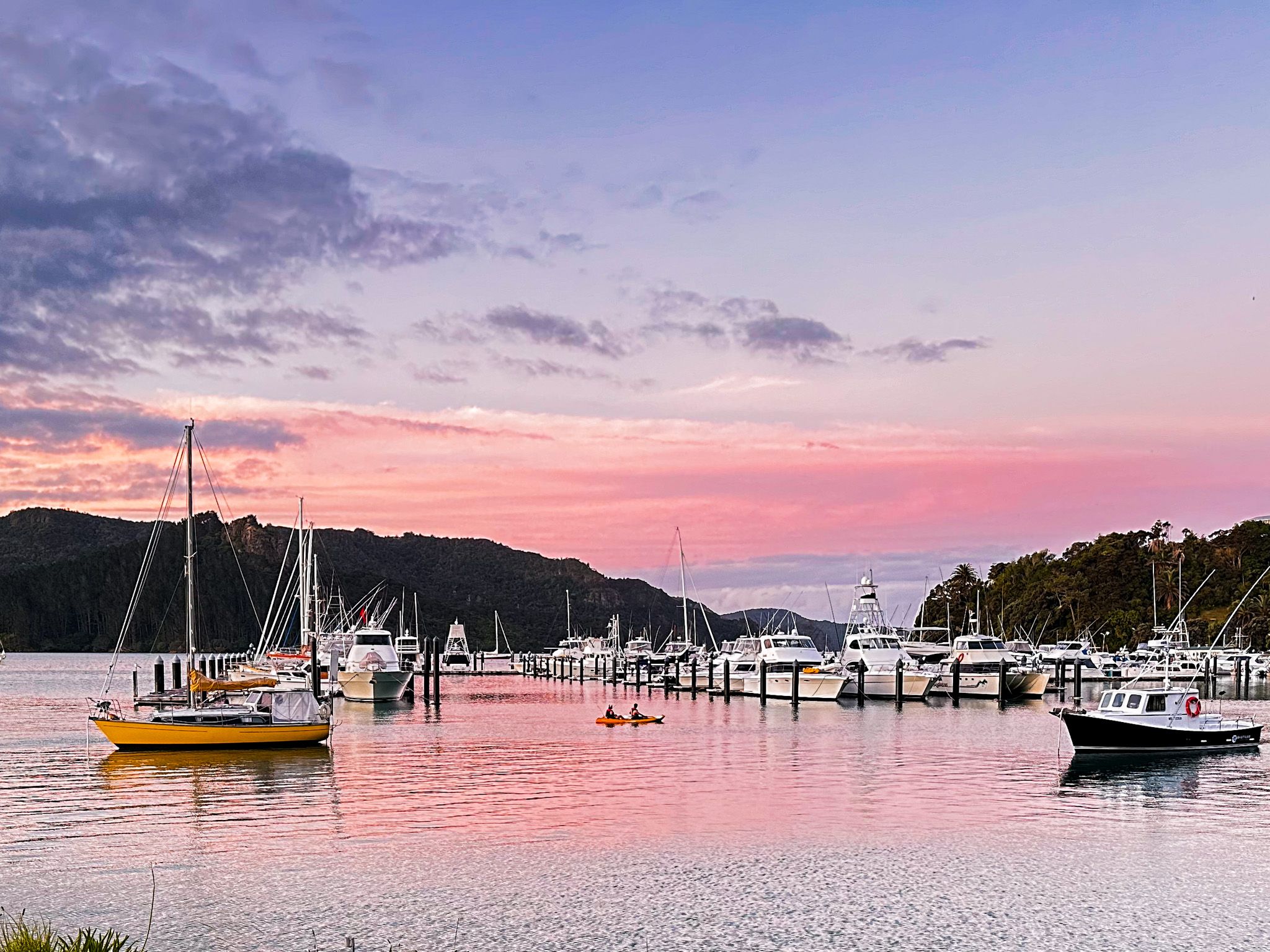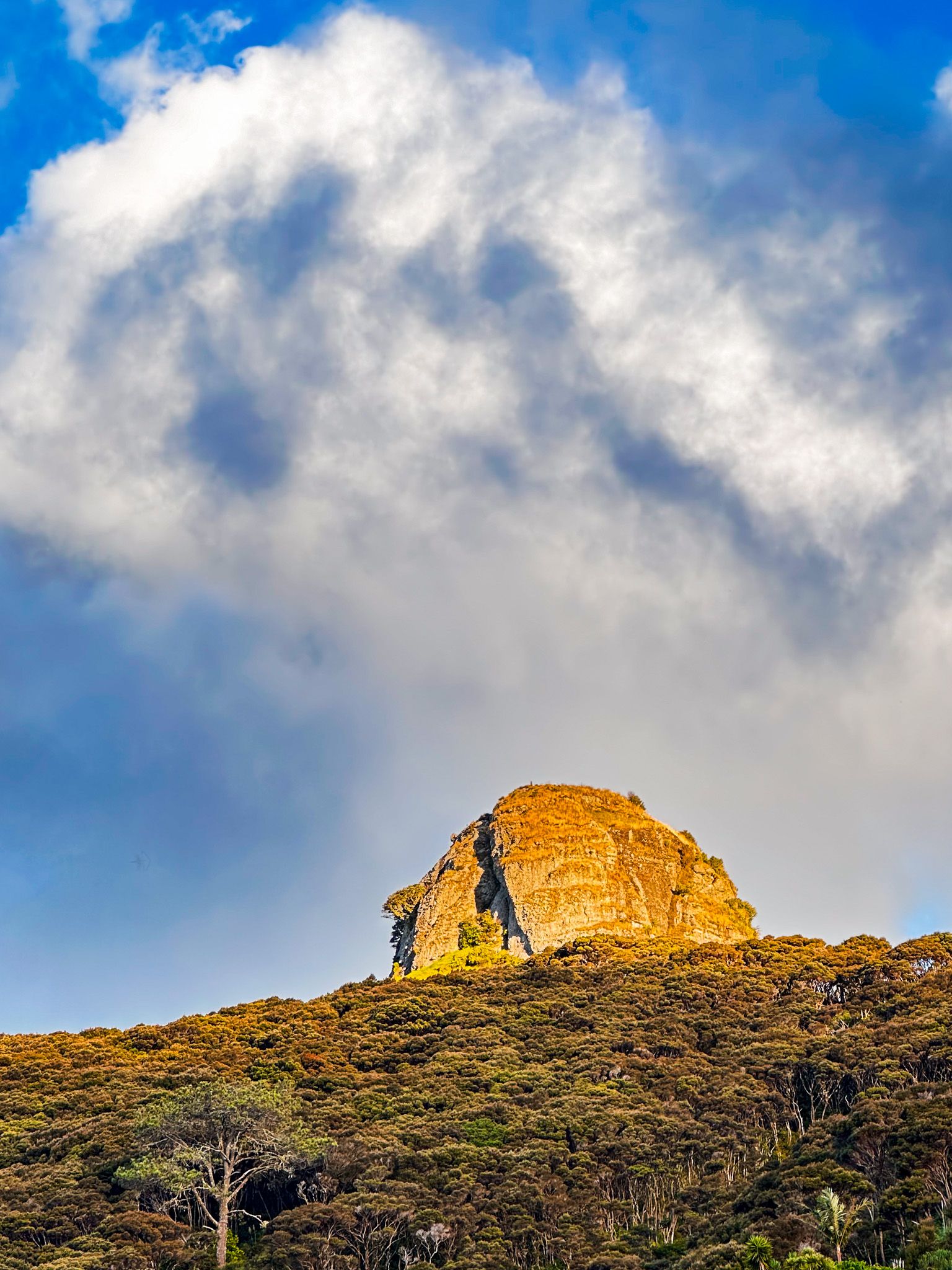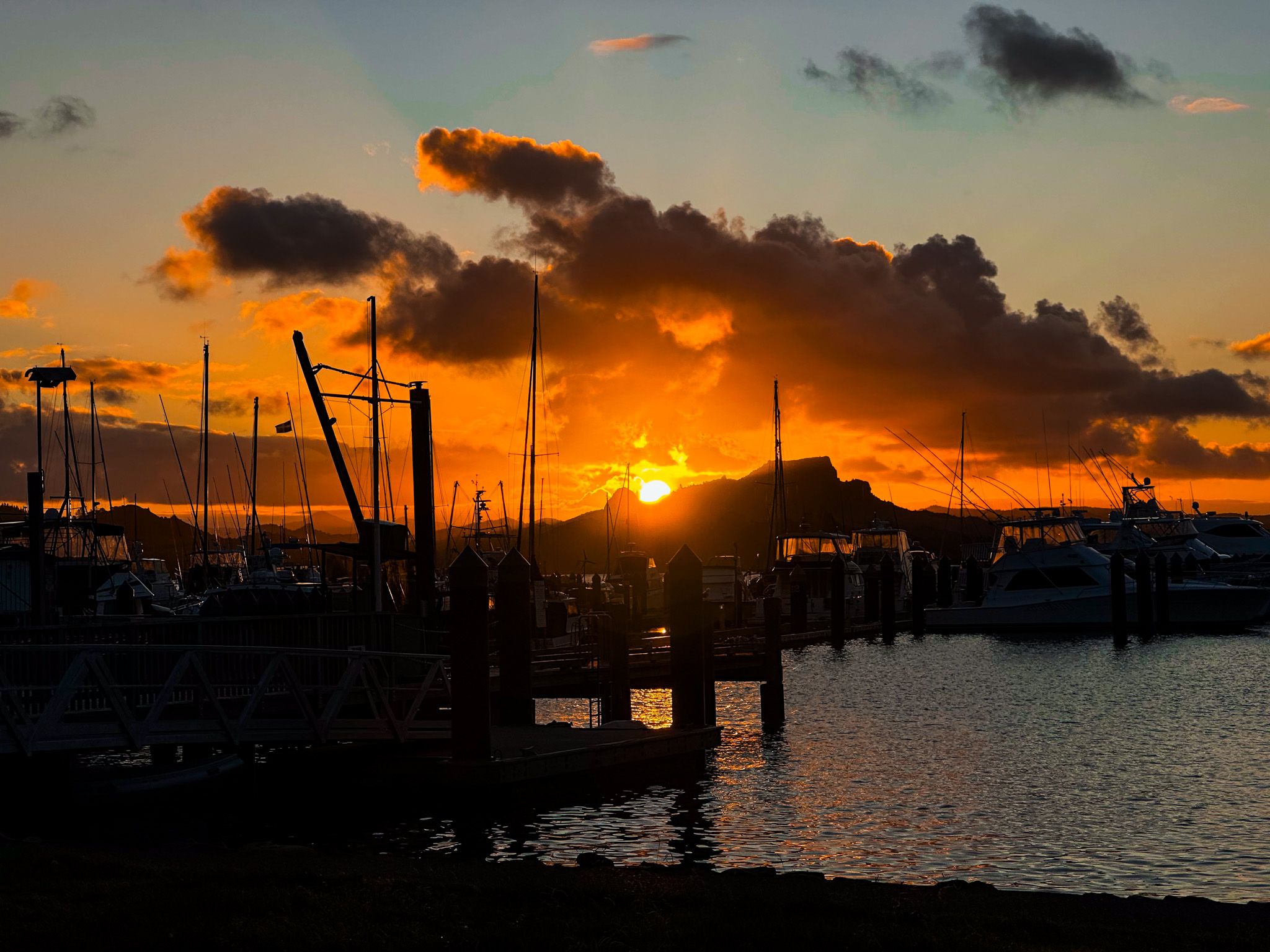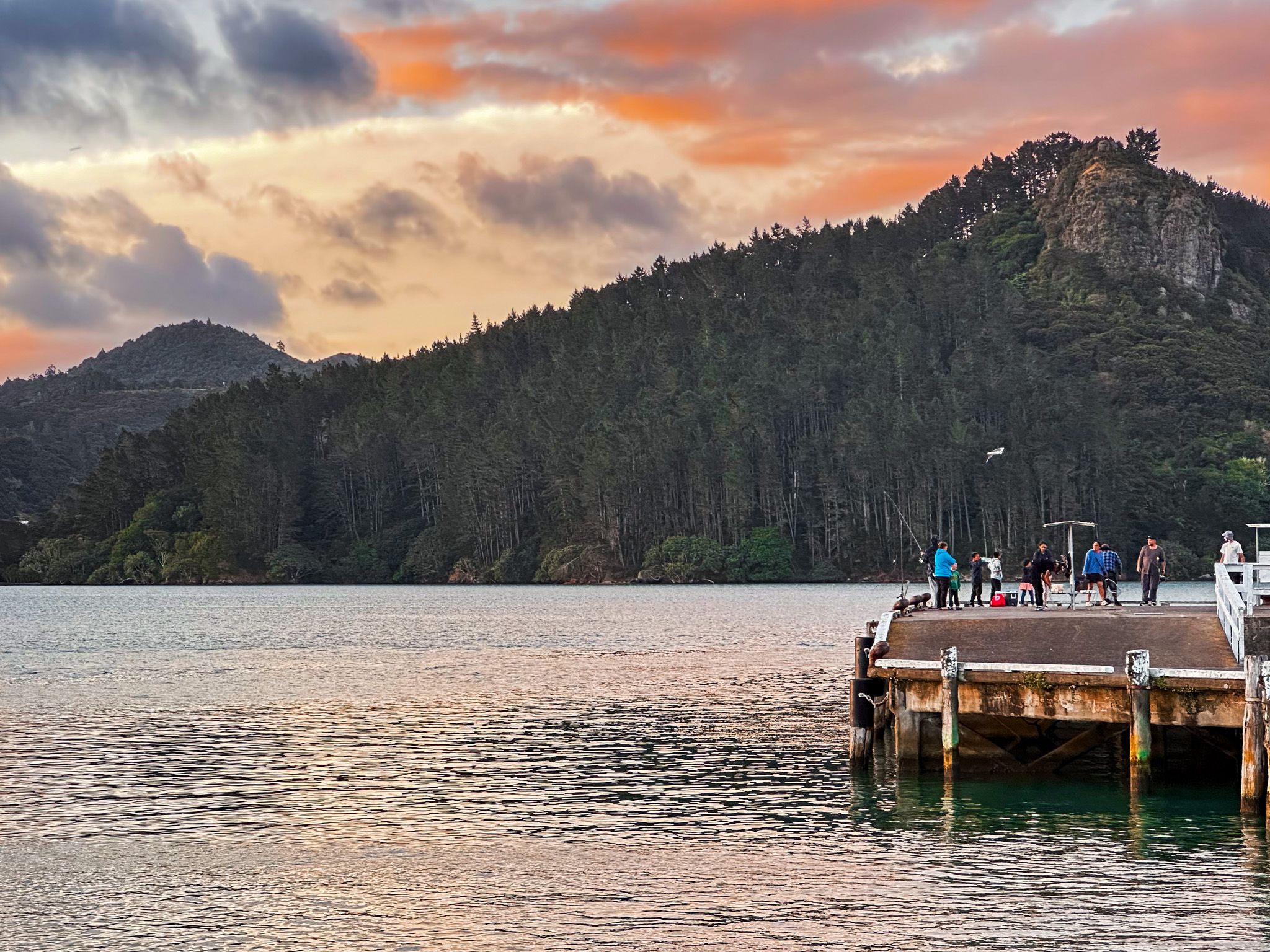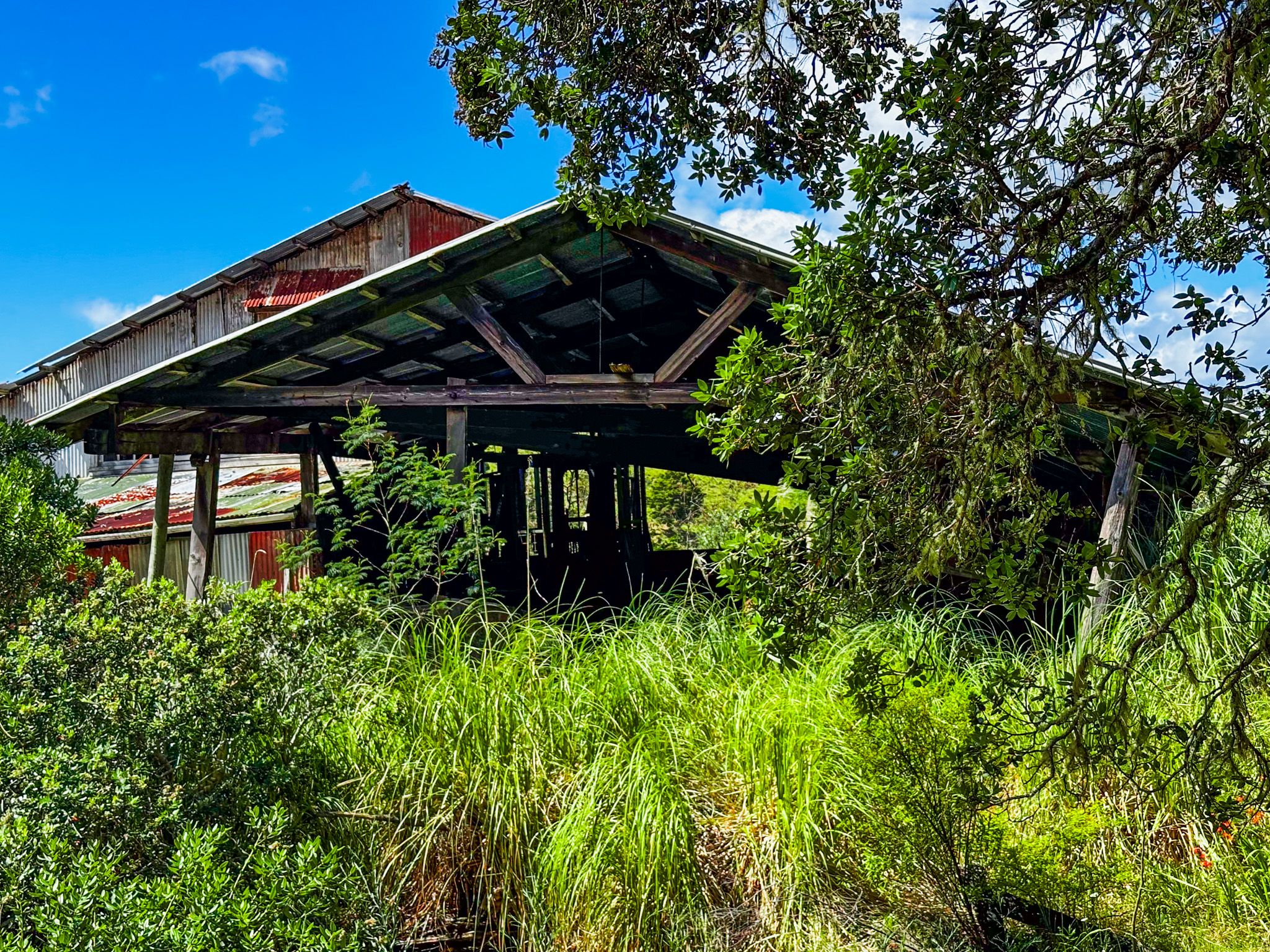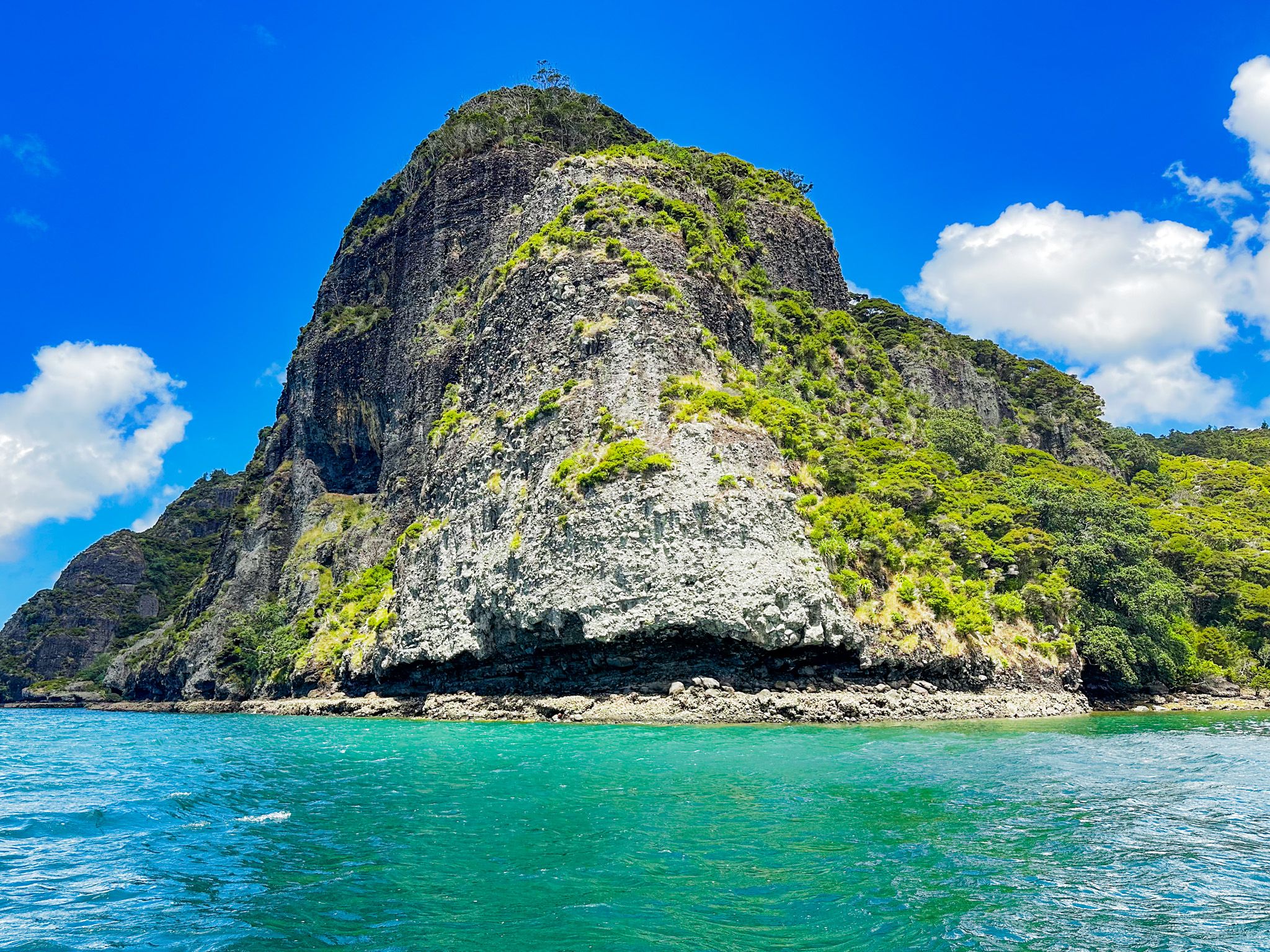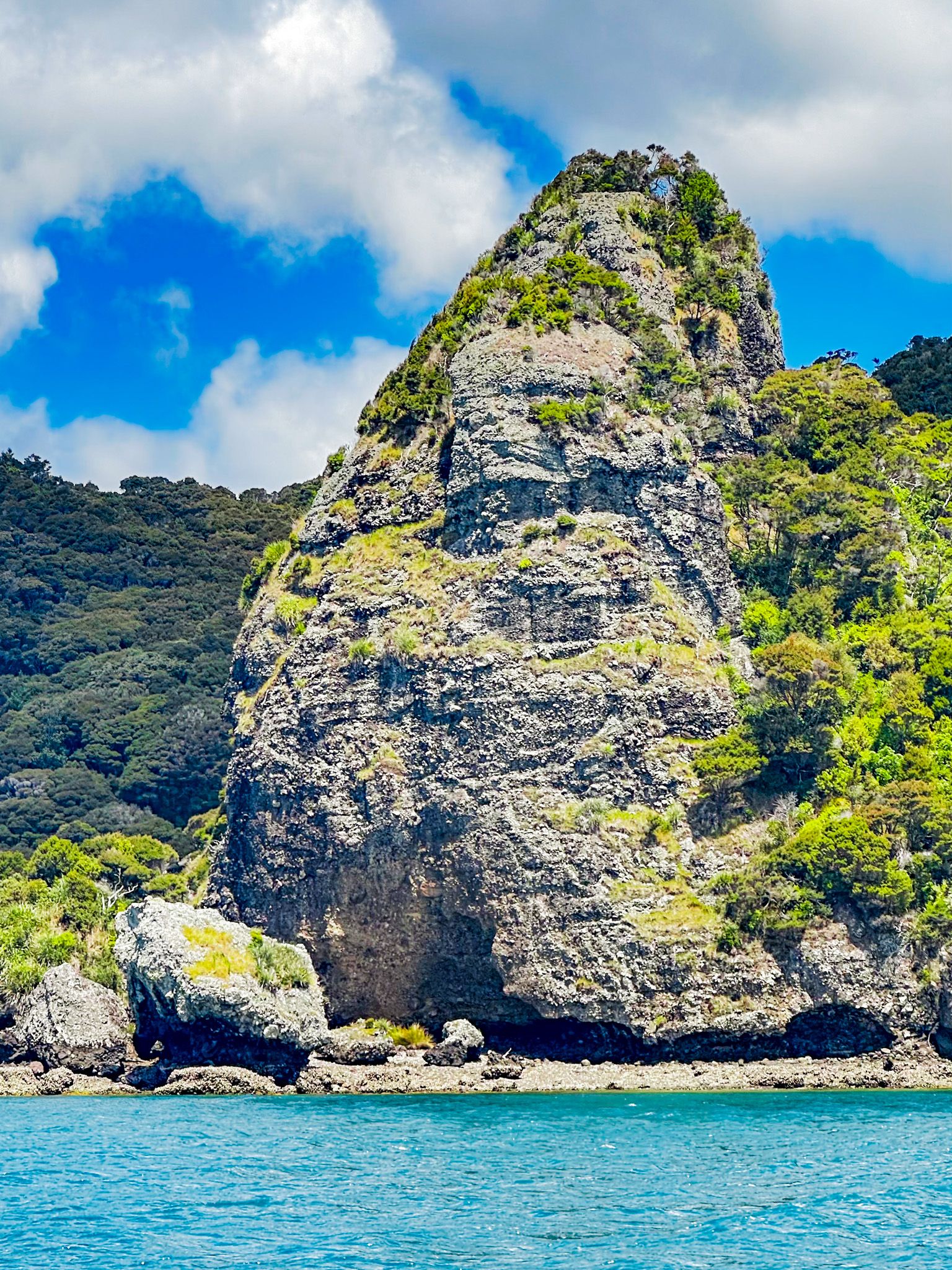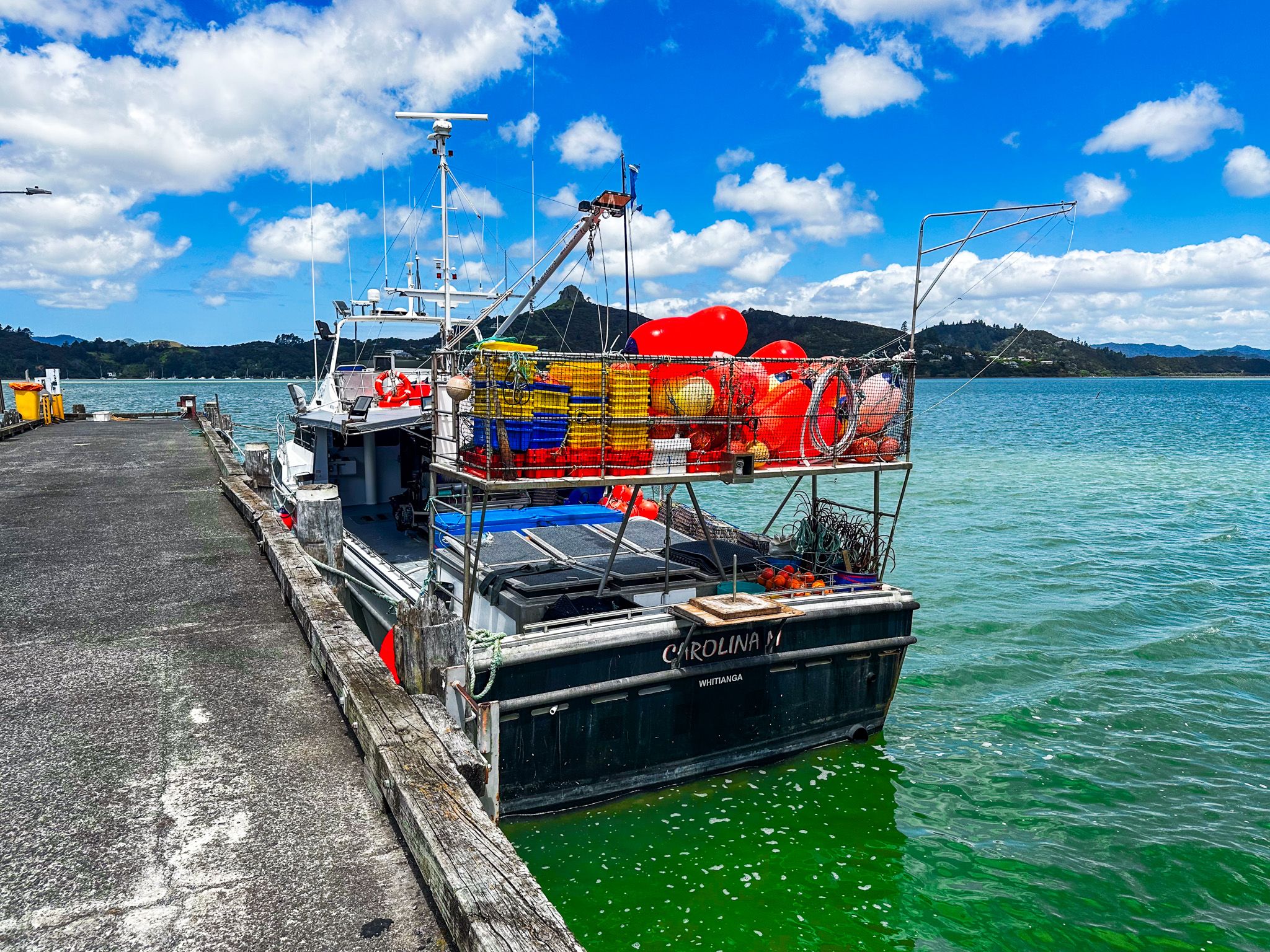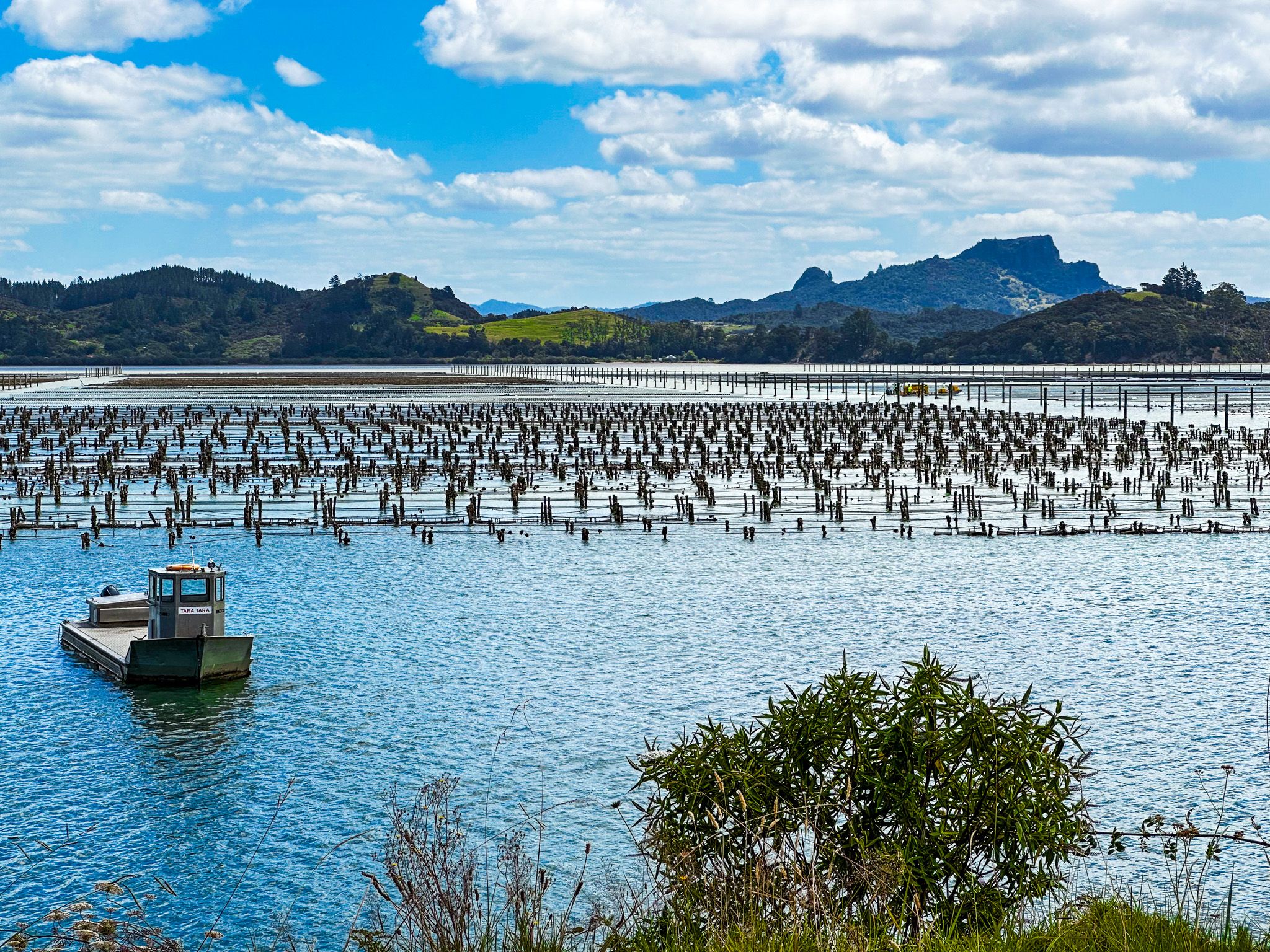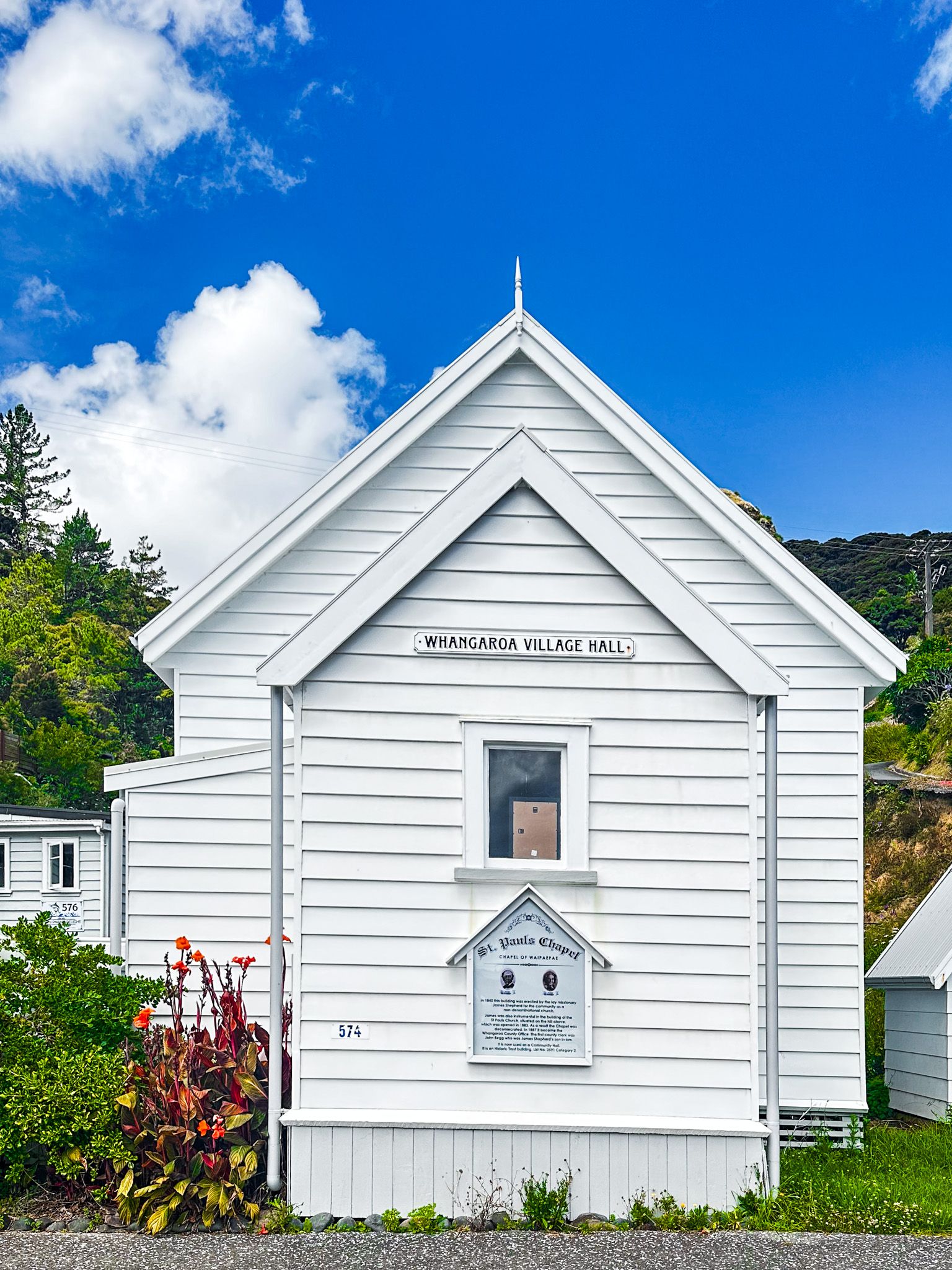Whangaroa Harbour is a stunning location in Northland with extraordinary natural volcanic rock features, mostly clad in forest. There are two small towns: Whangaroa on the east side and Totora North on the west. There is a marina at Whangaroa, and the only restaurant is at the adjacent sailing club. Commercial wharves also support the Pacific oyster farming operations south of Whangaroa.
The harbour was once a series of river valleys created by volcanic eruptions 15 to 20 million years ago by the Whangaroa Stratovolcano and subsequent erosion. The attractive rocky knolls and bluffs around Whangaroa Harbour are the eroded remnants of the enormous lahar ring plain created by the volcano. The valleys were drowned following rises in the sea level only about 6,000 years ago. The result is the stunning natural rock formations around the harbour, most notably Ohakiri / Saint Pauls (213 metres) overlooking the town of Whangaroa and Kairara Rock / Dukes Nose (180 metres) overlooking Pekapeka Bay.
If you don't have a boat, organising a water taxi or boat tour to explore the harbour is easy. Heading north of Whangaroa, you pass Kaheka Point and St Peters / Hopekako. To the east are Peach (Ohauroro) Island and Milford (Wairaupo) Island. The harbour then narrows as it passes Takahi Point / The Haystack (because it looks like one) to the west. Pekapeka Bay is immediately after the point. Lanes Cove is in Pekapeka Bay and provides access to the short Ohakiri / Dukes Nose Track, a DOC hut and the north end of the Wairakau Stream Track to Totora North. From there, the narrow harbour exit takes you into Whangaroa Bay, which faces the Pacific Ocean. Immediately to the east is Tauranga Bay, and the rugged Kōwhairoa Peninsula is to the west.
Whangaroa was also significant in early Māori / European interactions. Whalers and traders were actively trading with Māori by the early 1800s. However, in 1809, all but 4 of the 70 crew and passengers on the brigantine, the Boyd, were killed and cannibalised by Ngāti Pou. The event was utu (revenge) for the mistreatment of a Māori boy, Te Ara, who was the son of a chief and had been on the crew of the ship. Subsequently, the ship was destroyed when ransacking warriors accidentally ignited the stock of gunpowder.
The murders were big news in the South Pacific and delayed Samuel Marsden’s visit to NZ until 1814. In between, the few survivors of the attack were rescued by Alexander Berry in the ship City of Edinburgh, who happened to be picking up kauri spars in the Bay of Islands at the time. Berry took two local chiefs prisoner and released them in return for the survivors, as well as the Boyd’s ship papers.
There was a punitive raid by several whaling ships in 1810, who chose the wrong iwi, 60 km away, and murdered another 60 people. This, in turn, led to a battle between the falsely accused iwi and Ngāti Pou. The situation settled down, and a Wesleyan mission station was established near Kaeo in 1823. But in 1824, the crew and passengers of the schooner Endeavour had an altercation with Ngāti Pou, and there was again the risk of a major incident. The now Ngāti Uru chief, Te Ara of Boyd infamy, defused the situation!
In 1827, Hongi Hika had his own issues with Whangaroa iwi. He staged his attack from Tauranga Bay, and contrary to his orders, some of his warriors sacked the Kaeo mission station. The missionaries were able to flee to Sydney, but Hongi Hika was shot during the fighting and subsequently died in Whangaroa in 1828.
After the Treaty of Waitangi, the number of Europeans grew. For a while, there was kauri timber and shipbuilding. Some remnant old sheds and an interesting outdoor museum are near Totora North. But today, it is mostly about the beautiful harbour and spectacular rocks.
Whangroa is 6 km along Whangaroa Road from State Highway 10. It is also the western end of scenic Wainui Road, which connects several coastal communities and beaches. These include Tauranga Bay Mahinepua, Te Ngaere and Matauri Bay.
